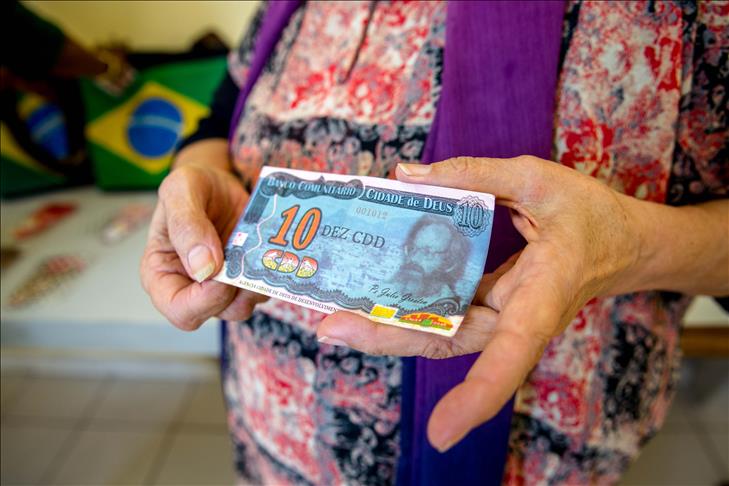
By Steffen Stubager & Asger Mow. Additional reporting by Ben Tavener
Businesses in the Rio de Janeiro favela (shantytown) community of Cidade de Deus aim to reinvigorate the use of a local currency, first brought in three years ago, in a bid to boost trade and prevent money from leaving the area.
In 2011, Cidade de Deus became one of the first communities in Rio to offer locals the option to use their own currency, known as the CDD. Those using CDDs, instead of the country's official currency, the Brazilian real, are given discounts and other perks. The project is one of hundreds used around Brazil.
"One of our biggest problems as a community is that local people have started spending more of their money in areas outside Cidade de Deus," Maria Cristina Neves Costa, one of two full-time employees at the Community Bank of Cidade de Deus, told the Anadolu Agency (AA).
"But with the local currency, people are encouraged to spend a larger amount of their money locally."
The goal is to boost local businesses and help to rejuvenate the community by creating more jobs and higher income for locals.
The value of the CDD is equal to the real, but many offer the 38,000 local citizens a discount on purchases made with the CDD. Some 9,000 CDDs are currently in circulation, but this is set to rise as the program expands.
The currency is made up of five notes, with values from 0.50 to 10 CDD, which feature local figures, well-known to the community.
One of them is 80-year-old seamstress Benta Neves do Nascimento, whose face is depicted on the 5 CDD bill as a tribute to her lifelong devotion to training residents in dressmaking and other handicrafts.

"The local currency is progress for our community and is working well," said Nascimento. "Popular restaurants and various shops use the money. But its use has to be expanded further and function throughout the whole community.”
- Discounts for local cash
Sérgio Luís Ribas, owner of the local Moleka ice cream store, believes the currency's arrival was an excellent idea, but three years on, he now hopes more people will start using it. A ten-percent discount is the extra topping given to those who pay in CDDs.
"The more people start using the local currency, the more local commerce will grow. As a local store owner, I want a lot of people spending more money here," Ribas told AA.
"Having our own currency will help the community but the authorities and the bank should be better at making people understand what the social currency is about and what it means for the growth of local commerce,” said Ribas.
The first local money in Brazil was the palma that sprouted near Fortaleza in Brazil's northeast in the 1990s.
The idea started out as a threat to the real. Police raided the offices of the first community bank but after a while, the government was convinced that the money was a good idea and from 2005, more sovereign currencies were launched across Brazil.
The government of Rio de Janeiro is currently planning to open more community banks in other communities in Rio de Janeiro.
- Fame came but problems persist
The poor community, located on the outskirts of Rio, around 16 kilometers (10 miles) from the city center and the famous beaches in Copacabana and Ipanema, was thrust into the world spotlight in 2002 by a blockbuster Brazilian movie City of God, with centered on the area's brutal drug lords.

In 2009, the community also became the second to be "pacified," in a bid to drive out armed criminals and install a permanent police presence in stations known as UPPs. Low-cost housing was built by the government to house many of the community's poorest residents.
But locals say problems with drug trafficking have persisted, despite the intervention, and reports of fatalities resulting from gun battles between police and suspected criminals are not uncommon. The case of a 13-year-old boy fatally wounded on June 15 in confrontations between security forces and drug gangs drew locals onto the streets in protest.
In May 2014, the local government said it was setting up a new hotline and offering rewards for information leading to the arrest of local drug lords.
Around forty UPPs have now been installed in and around Rio's many favelas since the beginning of the local government's policy of pacification in 2008. These poor communities are home to nearly a quarter of the city's 6.5-million-strong population.


